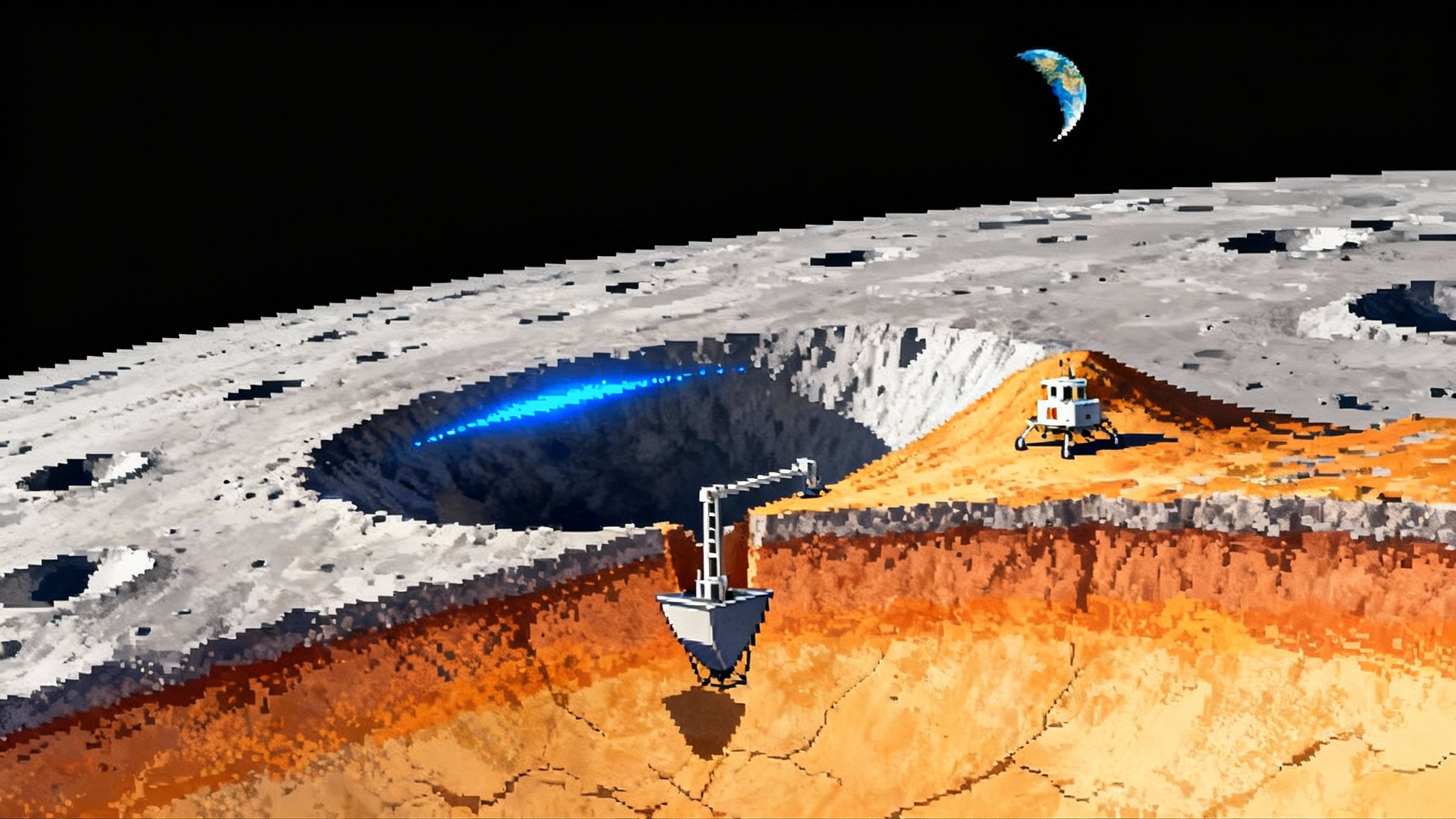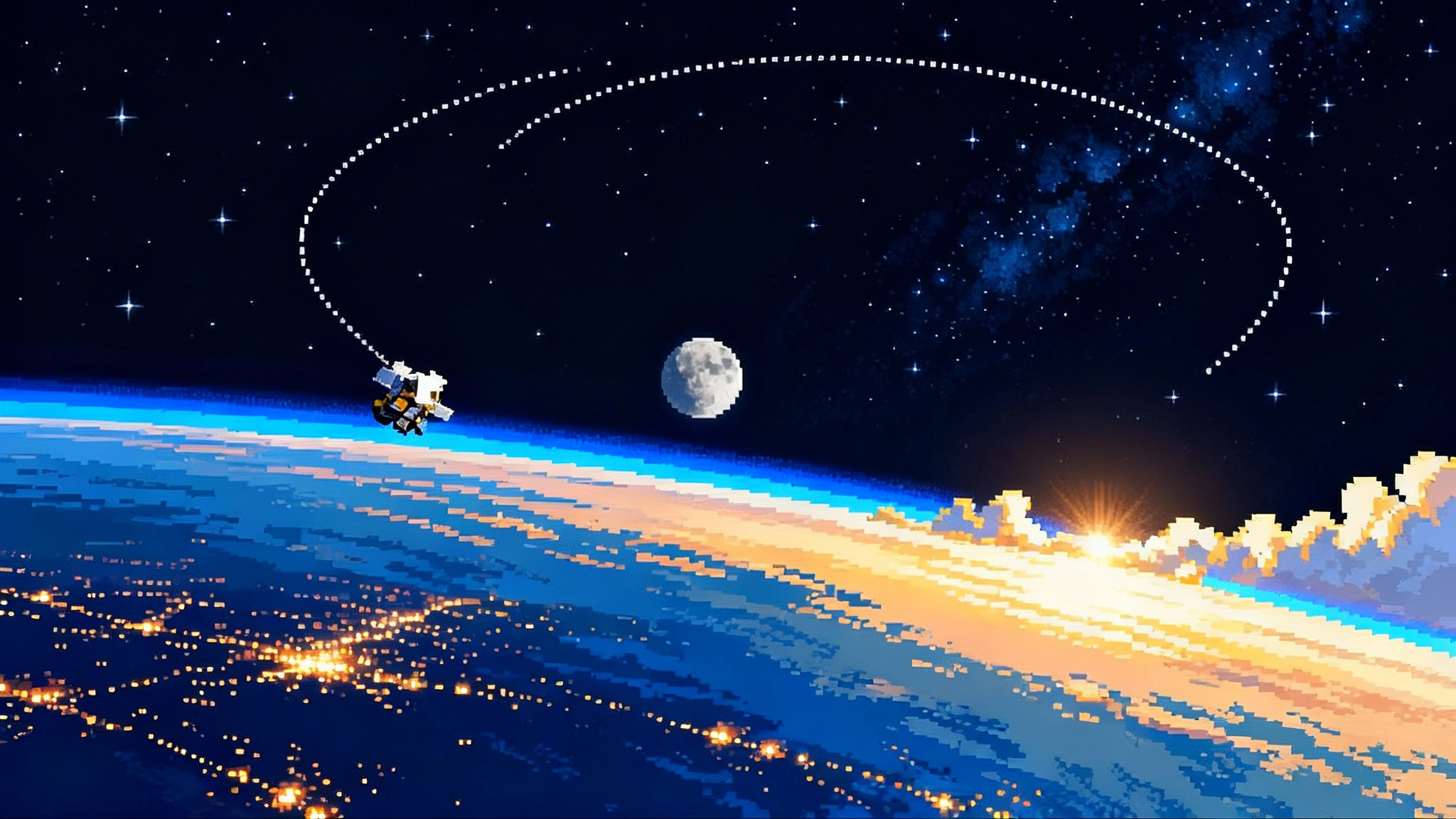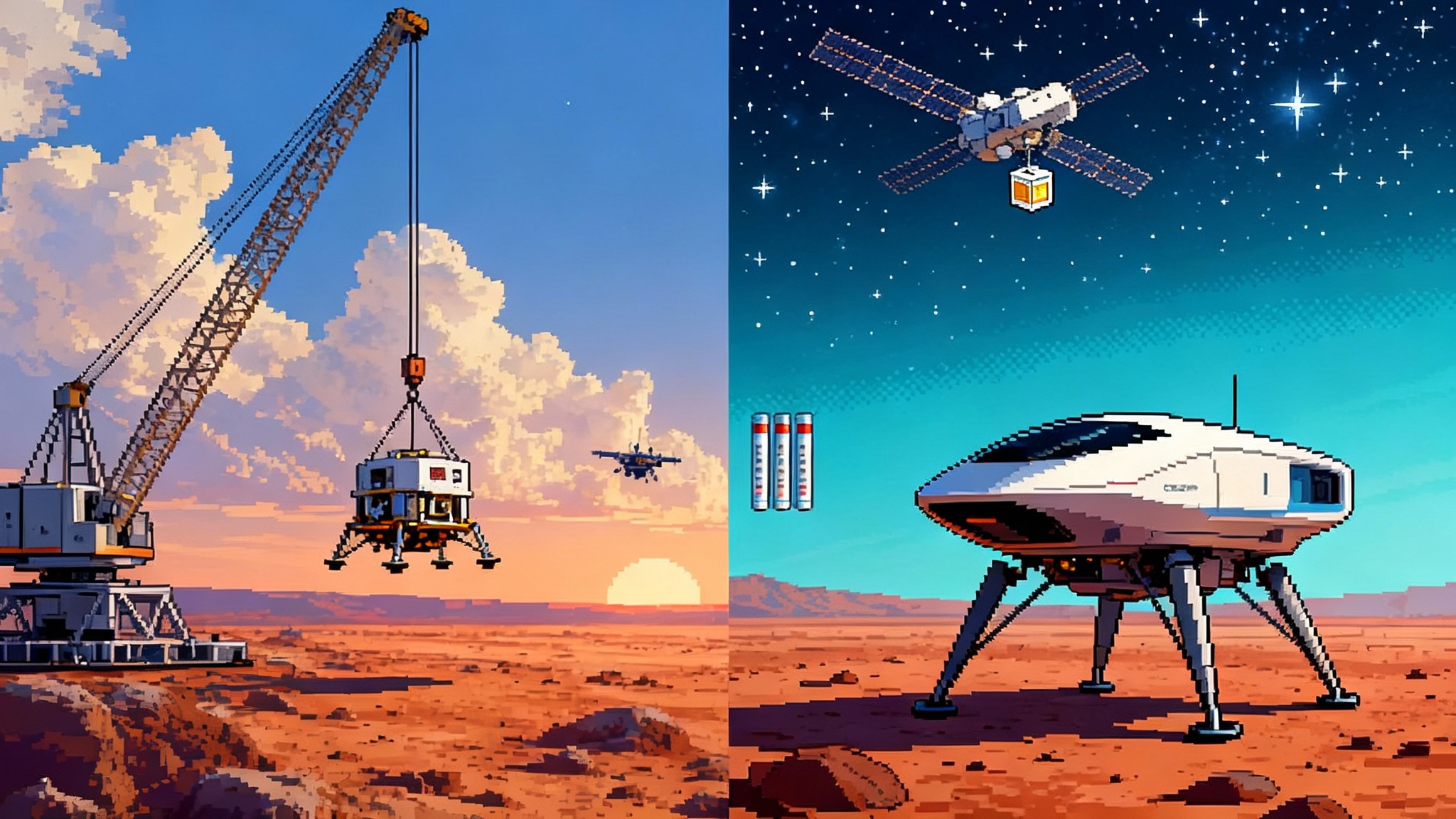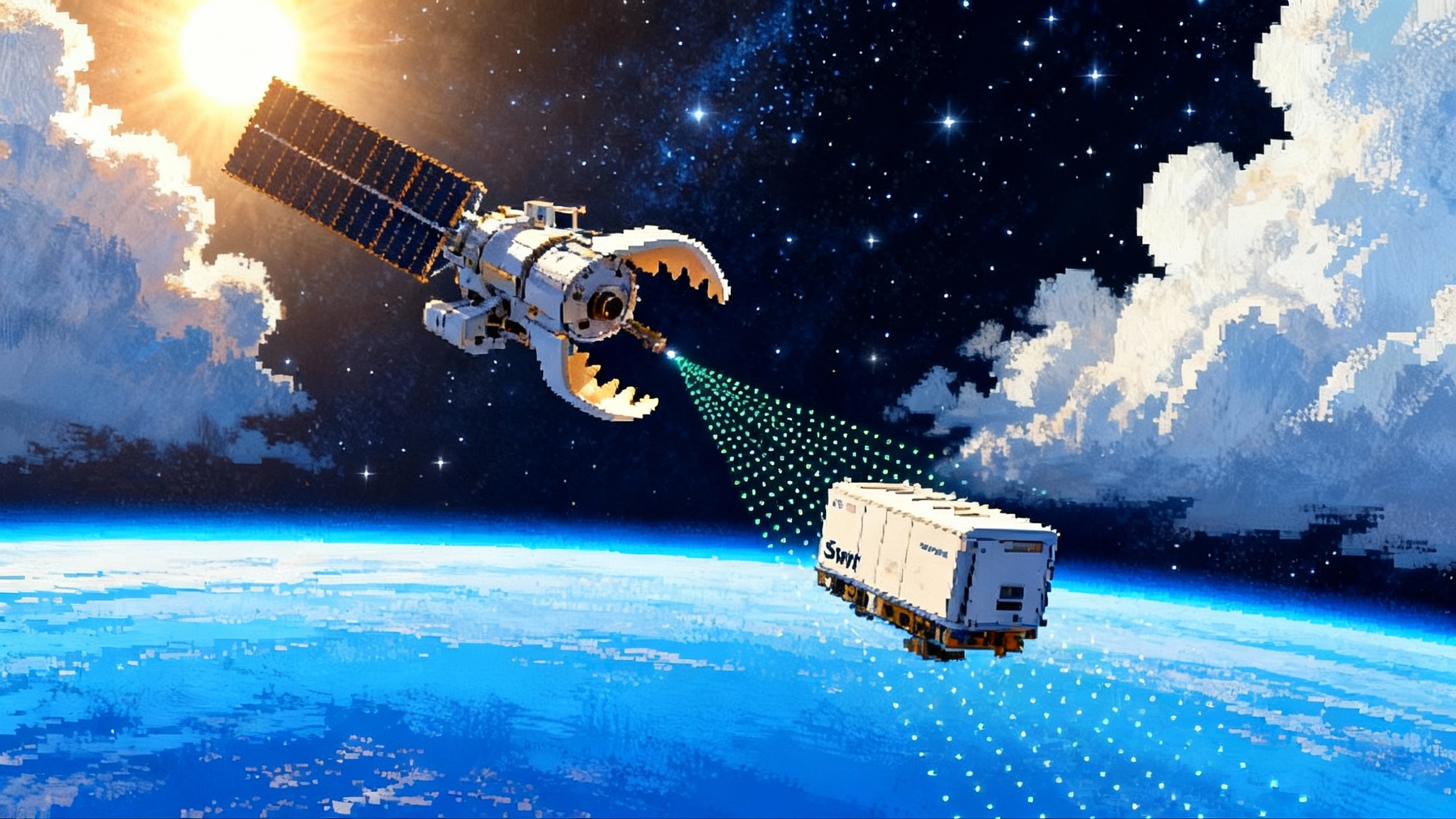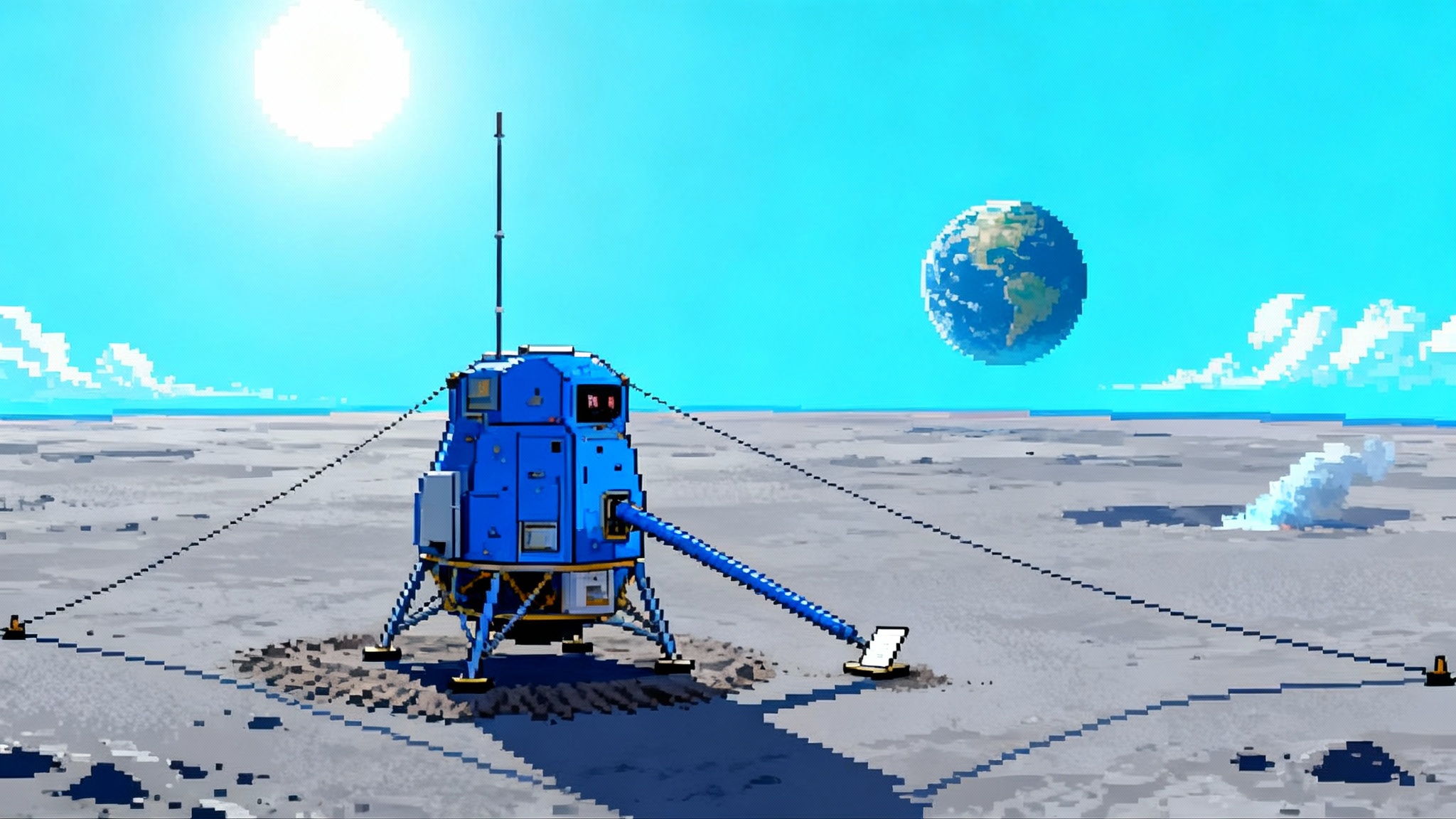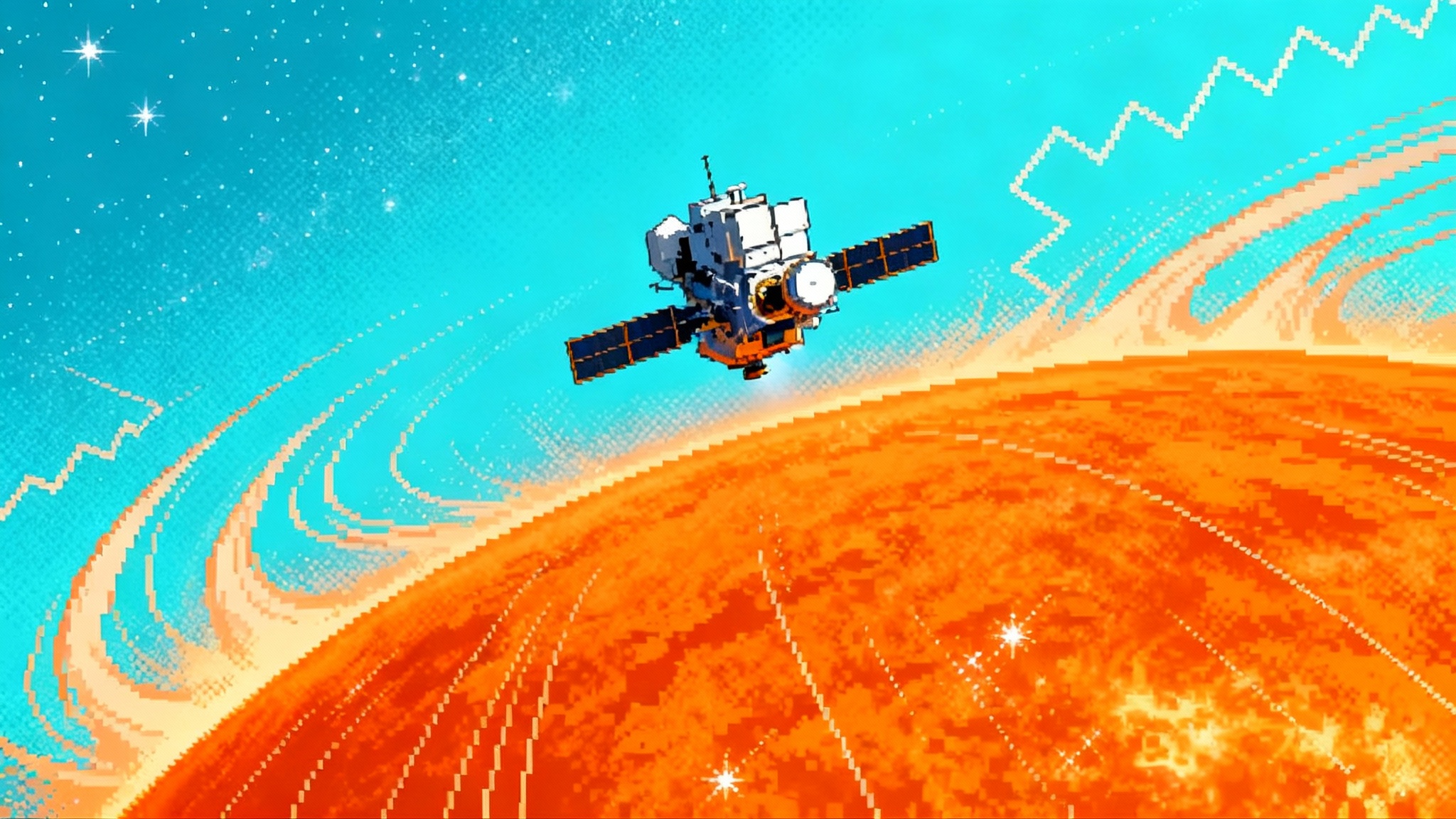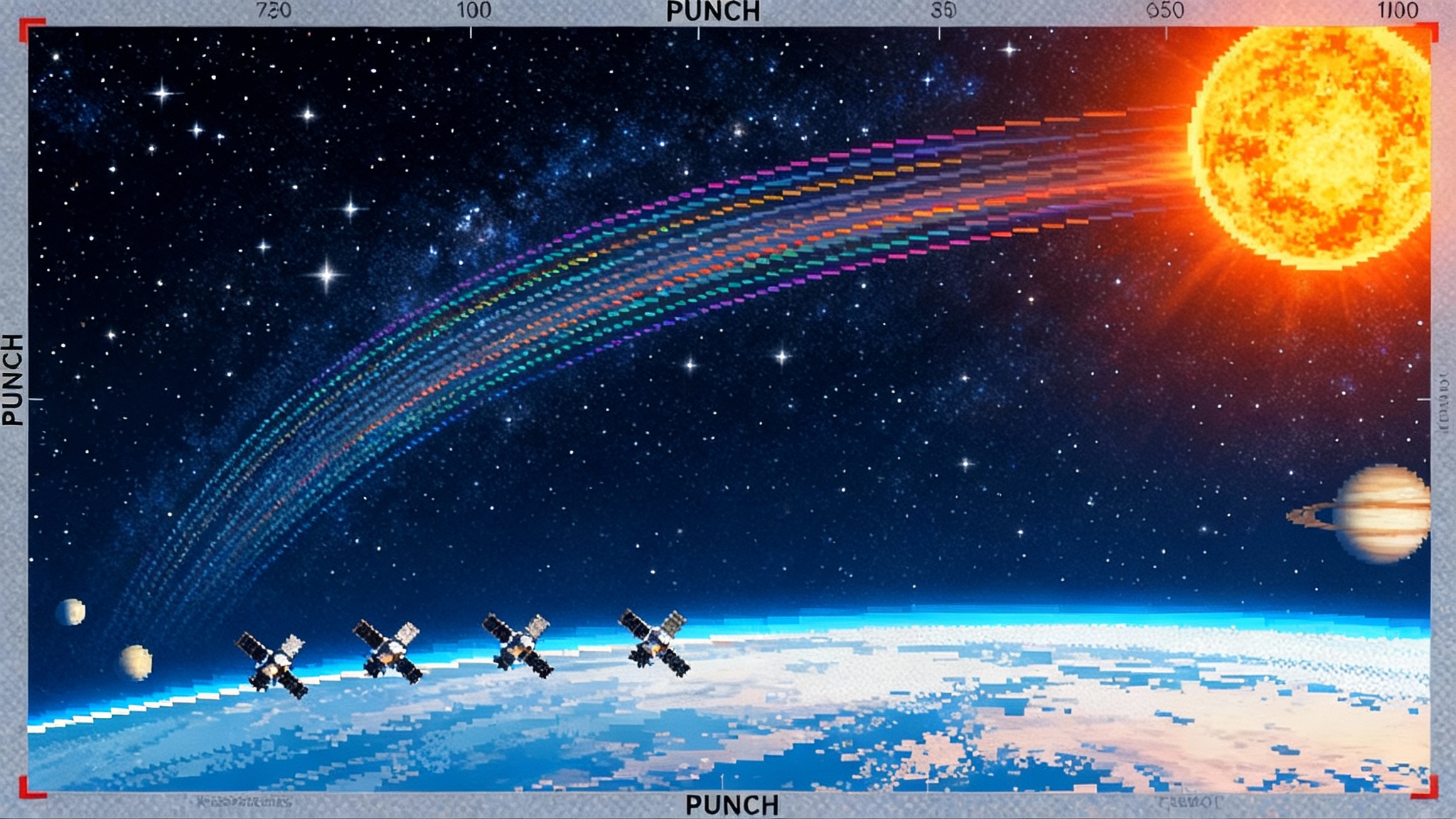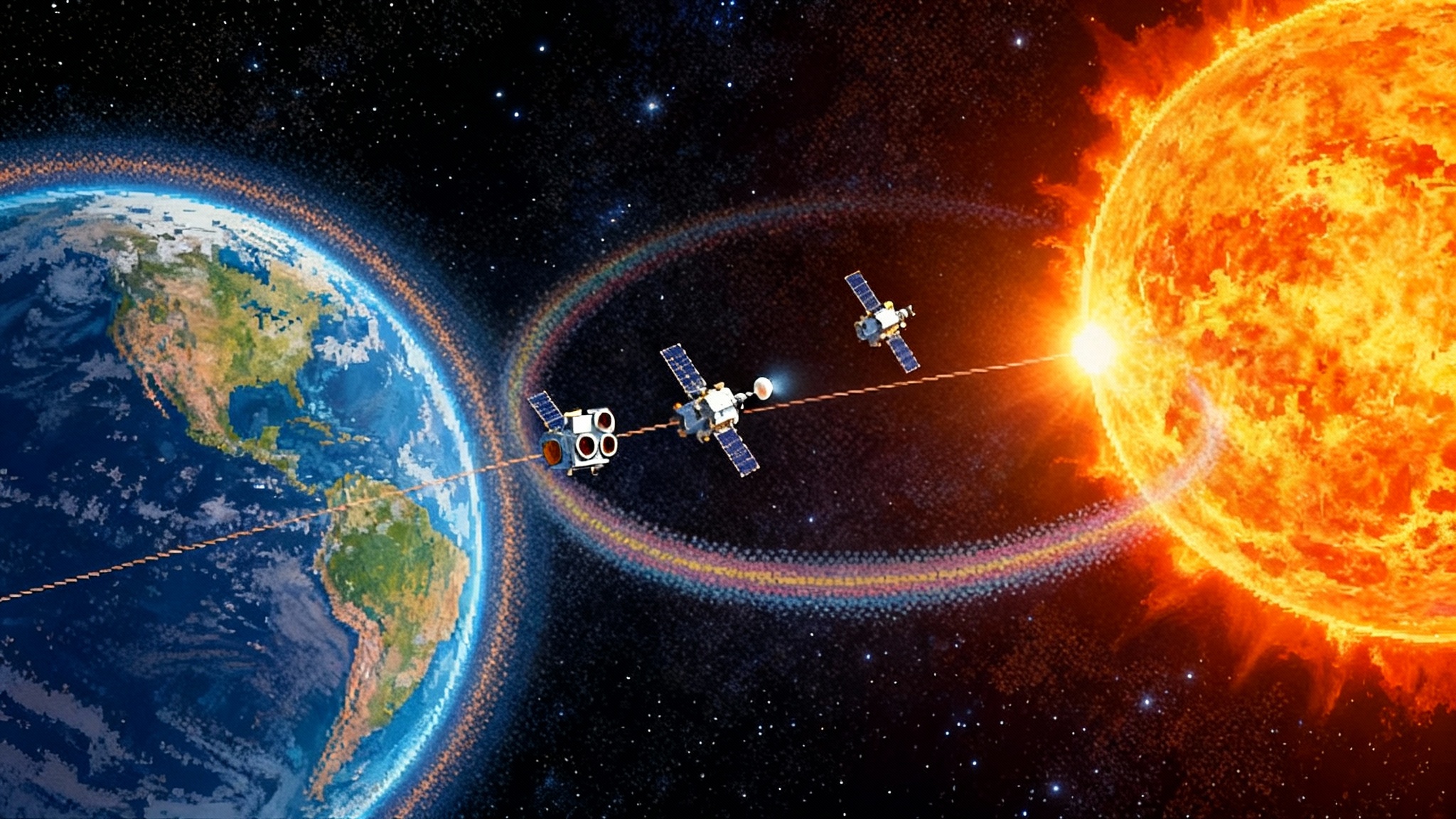NASA and NOAA’s L1 Trio Will Transform Space Weather for Artemis
A single Falcon 9 just sent IMAP, SWFO-L1, and the Carruthers Geocorona Observatory toward the Sun-Earth L1 point. Here is how their data will sharpen radiation alerts, guide Artemis planning, and unlock fresh heliophysics.
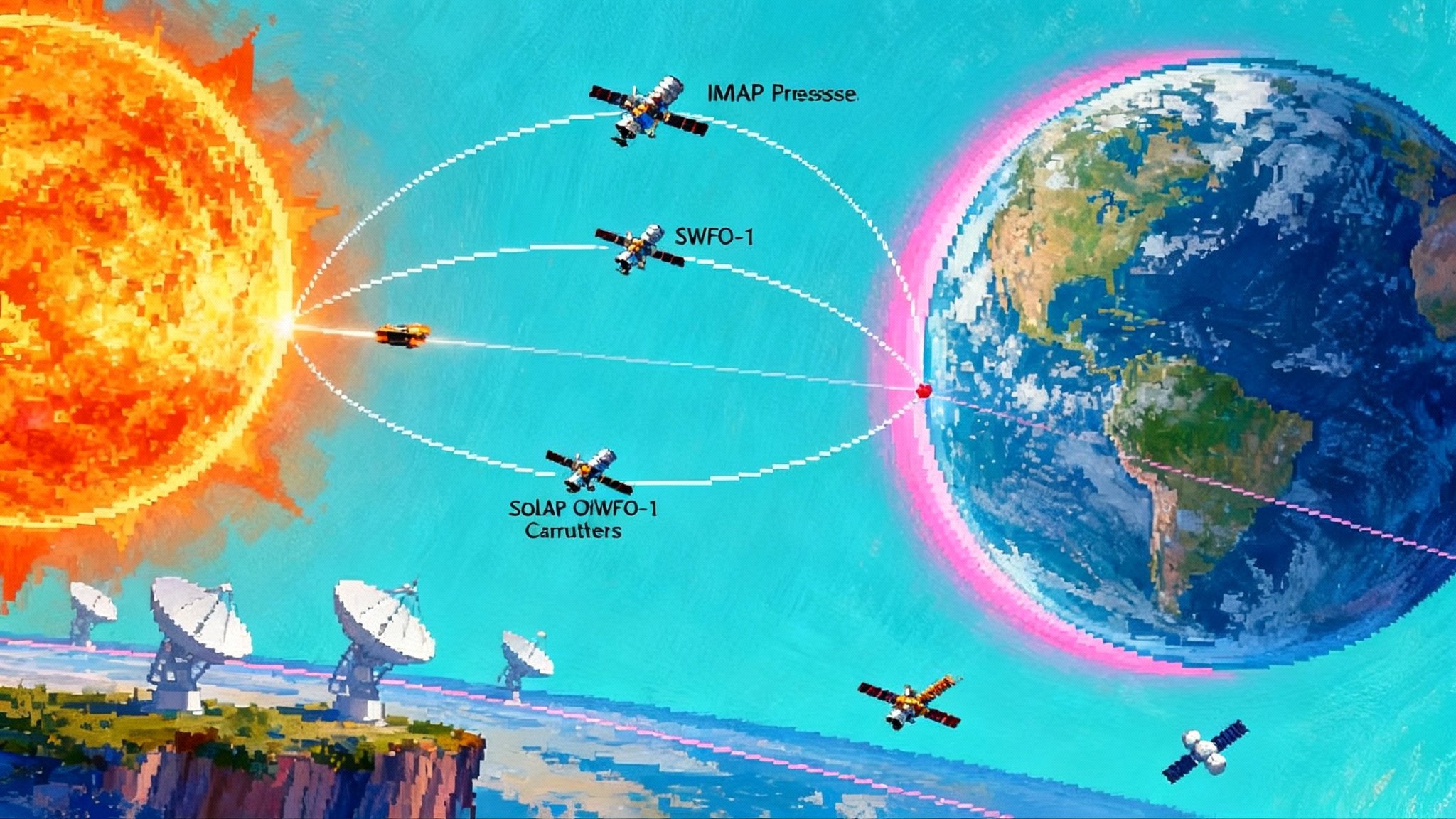
Three new sentinels between Earth and the Sun
On September 24, 2025, a Falcon 9 lifted three pathfinding space weather missions toward the Sun-Earth L1 point: NASA’s Interstellar Mapping and Acceleration Probe, NOAA’s Space Weather Follow On-L1, and NASA’s Carruthers Geocorona Observatory. The trio turns L1 into a coordinated outpost for both operational alerts and discovery science, with direct consequences for astronaut safety, satellite resilience, and our understanding of the heliosphere. The joint launch marked a rare alignment of goals across agencies and will shape how we plan Artemis sorties and commercial operations in cislunar space through this solar cycle. See the official details in the NASA launch release.
L1 sits about 1.5 million kilometers sunward of Earth, a sweet spot where gravity and orbital motion balance to keep a spacecraft in a stable halo or Lissajous orbit. That vantage is upstream of our magnetosphere, so plasma and radiation roll past L1 tens of minutes before washing over Earth. A well-instrumented L1 outpost is therefore equal parts lighthouse and laboratory, able to warn explorers and infrastructure while decoding the physics that drive stormy space weather.
Why L1 matters to human spaceflight right now
Radiation is the primary environmental risk for crews beyond low Earth orbit. Solar energetic particle events can arrive fast and hit hard. The worst bursts ramp up in minutes, with particle fluxes high enough to exceed exposure limits and threaten electronics. Coronal mass ejections carry magnetic structures that, when oriented just right, drive geomagnetic storms that can disrupt spacecraft, comms, and power grids.
From L1, a dedicated monitor can give the Artemis team and commercial operators precious lead time to shelter crews, delay an EVA, or reconfigure power and comms. During ascent or translunar injection, a timely L1 alert can trigger go or no-go decisions before a vehicle commits to the deep space leg. At Gateway or on the lunar surface, operators can use L1 data to activate storm shelters, reshuffle task timelines, and protect sensitive instruments.
Meet the trio
IMAP: mapping the heliosphere and the engines that energize particles
IMAP is a science powerhouse designed to answer two big questions. First, how the Sun accelerates charged particles across the heliosphere, from tiny bursts to major storms. Second, how the solar wind carves and interacts with the boundary of our heliosphere as it meets the local interstellar medium. IMAP carries 10 instruments that together sample everything from local solar wind plasma to energetic neutral atoms that backlight the heliosphere’s outer skin.
IMAP also has a job with immediate operational value. From L1 it will stream near real-time solar wind and energetic particle measurements. Those feeds improve models that predict radiation hazards for crews and electronics. Expect roughly 30 minutes of advance warning for the highest risk particle surges near Earth, enough to guide aborts, sheltering, or re-tasking for Artemis and for private missions moving cargo and crews through cislunar space.
Where IMAP stands out is context. By mapping how and where particles are energized and how they propagate, IMAP will turn today’s empirical warnings into physics-aware forecasts. That is the bridge we need for a sustainable cadence of lunar sorties and for future Mars transits, where solar storms cannot be dodged with quick retreats.
SWFO-L1: a round-the-clock beacon for solar wind and CME tracking
NOAA’s SWFO-L1 is the operational heart of the trio. It carries a compact coronagraph to image the extended solar corona and a suite that measures the solar wind’s speed, density, temperature, and magnetic field, along with suprathermal ions and electrons. SWFO-L1 is built to feed the Space Weather Prediction Center continuously, with low latency and high reliability.
The mission timeline matters for planners. After launch on September 24, 2025, SWFO-L1 is expected to arrive on station around January 2026, then complete commissioning by mid-2026 before transitioning to full operations. NOAA has confirmed the launch and outlined the road to L1 and operational status in its NOAA SWFO-L1 status update.
Once operational, SWFO-L1’s coronagraph images will constrain the direction, speed, and mass of coronal mass ejections, while in-situ instruments sample the solar wind and magnetic field just upstream of Earth. That pairing is the backbone of forecast models that turn imagery into arrival times and impact estimates. For flight controllers, this means earlier and more reliable go or no-go criteria for EVAs, staging burns, and comm windows.
Carruthers Geocorona Observatory: the first global movie of Earth’s exosphere
Carruthers is a small satellite with a big first. It will deliver the first continuous, global images of Earth’s geocorona, the vast, tenuous cloud of hydrogen that surrounds our planet and shines in ultraviolet Lyman-alpha light. From L1, Carruthers can see the full exosphere as a system and watch it react to solar wind conditions in real time.
Why this matters for operations. The geocorona is the interface between space weather and the upper atmosphere. Its shape and density respond to solar storms and radiation. That response affects satellite drag at the margins, the propagation of ultraviolet light, and the near-Earth neutral environment that instruments see. Continuous imaging lets modelers validate how energy from a storm couples into our atmospheric envelope. For crews and satellite operators, that means better drag forecasts, improved comm planning, and a new diagnostic for how storms are unfolding.
Carruthers also brings history full circle. Its namesake, Dr. George R. Carruthers, built the far-UV camera that captured the first geocorona image from the Moon during Apollo 16. Now a dedicated observatory will turn snapshots into a living data stream, tied directly to the solar drivers seen by its two companions.
How the datasets interlock
Think of the L1 trio as a layered sensing system that reduces ambiguity and shortens response time:
- Trigger and context from the Sun: SWFO-L1’s coronagraph detects a CME lifting off and measures its kinematics. That information seeds propagation models that estimate arrival times and magnetic orientation at Earth.
- Upstream in-situ conditions: Both SWFO-L1 and IMAP sample the solar wind plasma and magnetic field before the disturbance reaches Earth. If the interplanetary magnetic field turns southward, forecasters can escalate alerts for stronger geomagnetic coupling.
- Radiation nowcasting: IMAP’s energetic particle instruments detect the onset and spectra of solar energetic particles, allowing rapid evaluation of radiation risk for crews and avionics, with updates as the event evolves.
- Geospace response: Carruthers maps how the exosphere deforms during the event. Coupled with ground magnetometers and ionospheric data, this helps validate and improve models that translate solar drivers into atmospheric and geomagnetic impacts.
- Feedback loop for models: Assimilating all three data streams lets forecasters adjust the predicted arrival, intensity, and duration of impacts in near real time. That improves decision support for Artemis, Gateway, commercial landers, and satellites in high-value orbits.
For more on how heliophysics movies can feed forecasts, see our look at PUNCH 3D solar-wind movies.
A timely partnership with Parker Solar Probe and Solar Orbiter
The L1 trio comes online near the peak of Solar Cycle 25, just as NASA’s Parker Solar Probe and ESA’s Solar Orbiter are delivering unprecedented views and in-situ measurements close to the Sun. Parker flies through the outer corona, sampling the raw material of the solar wind soon after it is born. Solar Orbiter approaches from outside, imaging the corona and peering toward the poles where the global magnetic field is organized. For recent insights from Parker, see Parker’s solar max inflection.
Here is how they fit together:
- Source physics to forecast models: Parker’s in-situ measurements of waves, turbulence, and particle seed populations provide the microphysics behind the accelerators that launch solar energetic particles. Those details improve the transfer functions that turn coronagraph movies into quantitative hazard forecasts.
- Multi-point particle tracking: When a solar energetic particle event occurs, Parker near the Sun, Solar Orbiter on an inner orbit, and IMAP at L1 will measure the same event at different radii and longitudes. That gives modelers real constraints on how particles spread and evolve, which is essential for predicting dose rates for crews traveling outside the magnetosphere.
- Global magnetic context: Solar Orbiter’s imaging at higher latitudes, combined with SWFO-L1’s coronagraph and near-Earth measurements, helps pin down the large-scale field topology. That topology often controls whether a CME’s magnetic field will couple strongly to Earth’s, a key factor for geomagnetic storm severity.
- Geospace coupling: Carruthers closes the loop by revealing how energy deposition aloft translates to changes in the exosphere’s shape and density. That ties a solar event’s origin to a directly observed atmospheric response.
What changes for Artemis and cislunar operators
- EVA and shelter planning: Dose rates from solar energetic particles can spike quickly. With IMAP’s particle nowcasts and SWFO-L1’s upstream field readings, mission control can set color-coded EVA thresholds with higher confidence and adapt in minutes. EVA toolkits can include radiation dosimeters tied to L1 alerts, and shelter ingress procedures can be rehearsed against specific lead-time bins.
- Trajectory and timeline flexibility: Translunar injection, LOI, and return burns are sensitive windows. Operators can build dynamic holds into countdowns and transfer arcs that use L1 alerts as real-time constraints, reducing exposure to worst-case particle events.
- Gateway and surface ops: Gateway schedules can include protected maintenance windows and low-power configurations keyed to L1 forecasts. Surface habitats can shift crew tasks into interior volumes during elevated risk periods, while robots take over outdoor work. For context on commercial lunar logistics, see CLPS turning point at Crisium.
- Commercial services: Delivery and relay providers can add L1-driven clauses to service level agreements. If SWFO-L1 and IMAP indicate a rising storm, operators can preemptively change antenna pointing, reduce imaging loads, or spin spacecraft to protective attitudes.
Milestones to watch next
- Cruise to L1: All three spacecraft are tracking to arrive around January 2026, with early trajectory corrections and instrument power-ons during cruise.
- Commissioning: Expect stepwise checkouts through mid-2026. SWFO-L1 is slated to complete commissioning and transition to full operations by mid-year. IMAP and Carruthers will phase instruments into science mode as calibrations complete.
- First data: Carruthers will begin global geocorona imaging after checkout. SWFO-L1 will ramp coronagraph and in-situ products to operational cadence as commissioning concludes. IMAP’s near real-time streams will come online during checkout, with comprehensive energetic neutral atom maps following full-instrument calibrations.
- Cross-mission campaigns: Watch for coordinated observing periods with Parker Solar Probe and Solar Orbiter during high-activity intervals. Those campaigns will be the crucible for the new Sun-to-Earth chain.
Downstream impacts you will notice on Earth
- Satellite resilience: More reliable lead time means safer momentum dumps, reaction wheel desaturations, and instrument cover operations before a storm hits. Operators can schedule safe modes and reboots to avoid single event upsets at peak flux. Crosslink constellations can redistribute throughput away from vulnerable nodes during forecasted disturbances.
- Grid protection: Transmission operators can bias reactive power reserves, reduce long-haul tie loading, and watch harmonics when L1 indicates a southward interplanetary magnetic field. Better arrival time estimates cut the cost of false alarms and shorten recovery after real hits.
- Aviation and comms: Airlines can reroute polar flights and adjust HF comm profiles earlier. GNSS augmentation systems can shift to storm-tolerant algorithms. Deep space networks can reschedule high-rate passes in advance of scintillation and phase noise spikes.
- Mars mission design: The trio will seed radiation climatologies that feed shielding trades and storm shelter sizing for long-duration flights. IMAP’s physics-based understanding of particle acceleration will reduce uncertainty in worst-case event spectra. That lets architects balance mass, margin, and risk with more confidence.
The bigger scientific payoff
Beyond operations, this is a golden moment for heliophysics. IMAP’s ENA imaging will outline the heliosphere’s boundary and its changing interaction with the local interstellar medium. SWFO-L1’s coronagraph will sustain a continuous record of the corona’s mass ejections as Solar Cycle 25 turns over. Carruthers will capture the first global movie of how Earth’s exosphere breathes with the Sun.
Together with Parker Solar Probe and Solar Orbiter, the L1 trio will turn the Sun-Earth system into a laboratory we can probe from source to sink. The payoff is knowledge that bends risk. For explorers, that translates into smarter plans and safer missions. For everyone on Earth, it means fewer surprises when the Sun decides to roar.
What success will look like
By late 2026, if things go to plan, forecasters will trust L1 streams enough to tighten warnings without increasing false alarms. Artemis will treat L1 alerts as routine constraints, like weather at a launch site. Commercial providers will advertise L1-aware services. Researchers will publish the first cross-calibrated event studies that tie a specific flare and CME to changes in the exosphere and to real operational decisions.
That is the quiet revolution these three spacecraft promise: a shared, upstream view of the Sun and our near-Earth environment that protects people and hardware today while opening new terrain for science tomorrow.
